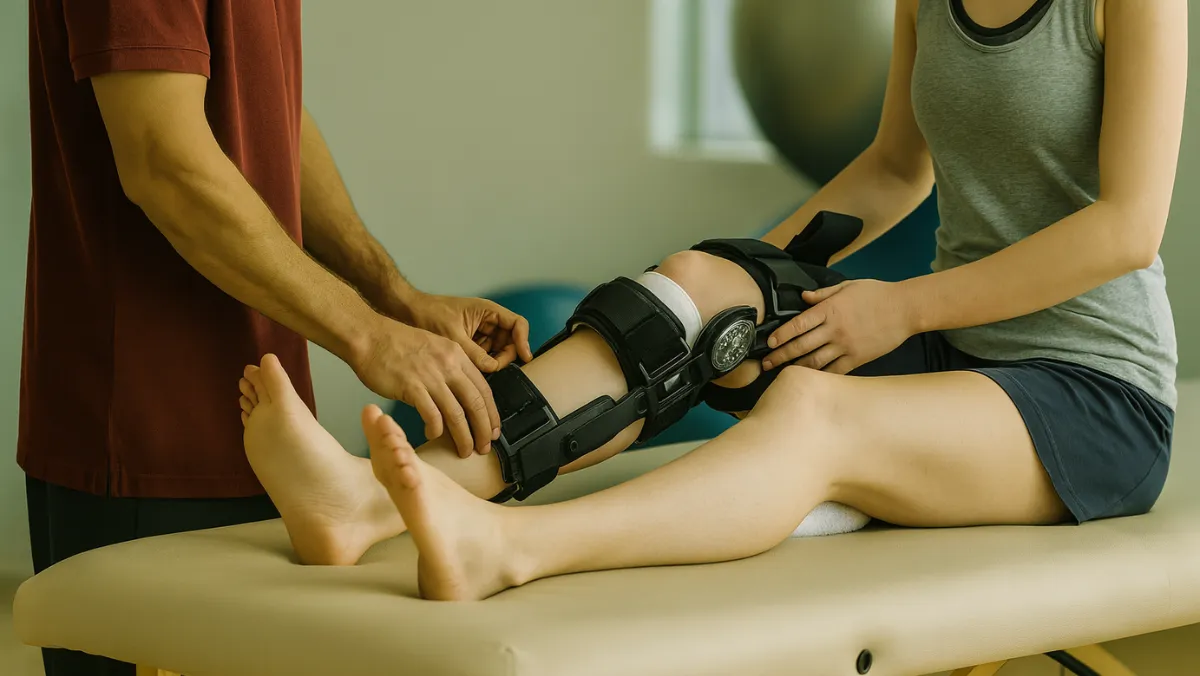
Safety Rate
Arthroscopic ACL (Anterior Cruciate Ligament) rehabilitation is an essential part of recovery for individuals who have undergone arthroscopic surgery to repair or reconstruct a torn ACL. The ACL, one of the key ligaments in the knee, plays a vital role in maintaining stability during walking, running, pivoting, and jumping. Unfortunately, this ligament is highly prone to injury, especially among athletes, fitness enthusiasts, and individuals who experience sudden twisting or impact to the knee.
Arthroscopic ACL surgery in Chennai is a minimally invasive approach that uses small incisions and advanced surgical instruments to treat the damaged ligament. Compared to traditional techniques, arthroscopy causes less tissue trauma, results in smaller scars, and allows for a quicker recovery. However, the surgery is just the first step—the success of treatment largely depends on a structured rehabilitation program.
The primary purpose of ACL rehabilitation is to restore knee function and stability while preparing the patient to return to daily activities or sports with confidence. The specific goals include:
This stage begins within days of surgery. The focus is on protecting the new graft and controlling discomfort. Patients are advised to use ice packs, compression bandages, and leg elevation to manage swelling. Crutches and a knee brace may be required to support mobility. Gentle exercises such as ankle pumps, heel slides, and quadriceps tightening are introduced under a physiotherapist’s guidance to maintain circulation and prevent stiffness.
Once the knee begins healing, the emphasis shifts to regaining range of motion and initiating controlled weight-bearing. Exercises like straight-leg raises, and step-ups help rebuild muscle strength. Stationary cycling at low resistance may also be included to encourage movement without overloading the joint. This stage is crucial to prevent muscle atrophy and improve mobility.
During this period, patients progress to more challenging workouts aimed at enhancing balance, stability, and strength. Closed-chain exercises such as lunges and leg presses are commonly used. Proprioception and balance training on foam pads or wobble boards help retrain the knee’s stability. Low-impact cardiovascular exercises like cycling, elliptical workouts, or swimming are encouraged to build endurance.
At this stage, patients work on regaining agility, speed, and functional strength. Plyometric drills, single-leg exercises, and sport-specific activities are gradually introduced. Agility training—such as ladder drills, cone runs, and directional changes—prepares athletes for dynamic movements while ensuring joint safety.
The final stage focuses on restoring full performance levels. Patients undergo sport-specific training that includes sprinting, cutting, and pivoting movements. Functional assessments ensure the operated leg matches the strength and stability of the non-injured side. Only after passing these evaluations are patients cleared for competitive sports or high-demand physical activity.
Even though arthroscopy is less invasive, recovery still requires patience and consistency. Professional physiotherapy in Chennai ensures that rehabilitation progresses safely without rushing into advanced exercises. Skipping therapy or returning to activity too soon increases the risk of complications or reinjury.
arthroscopic ACL rehabilitation in Chennai by Dr Vijay Sohanlal provides patients with a systematic pathway to restore knee strength, flexibility, and stability. With expert guidance, dedication, and time, most individuals can expect to return to their normal lifestyle—and even competitive sports—within 6 to 9 months.
The recovery time for arthroscopic ACL surgery typically ranges from 6 to 9 months. Early post-operative care includes rest, ice, and gentle movement to reduce swelling and pain. Patients gradually progress to weight-bearing exercises and strengthening routines under a physiotherapist’s guidance. Full recovery, including returning to sports or high-intensity activities, depends on adherence to rehabilitation protocols, individual healing, and muscle strength restoration. Most patients regain stability, flexibility, and confidence in their knee during this period.
Rehabilitation after ACL surgery usually spans several months, with a structured program that gradually restores mobility, strength, and stability. The initial phase focuses on reducing swelling and regaining knee movement, followed by progressive exercises to strengthen muscles around the joint. Later stages include balance, agility, and sport-specific training. Consistent physiotherapy and following medical guidance are key to preventing reinjury. Most patients achieve full function and are able to return to sports or active lifestyles within 6 to 9 months.
The 10 stages of ACL rehab provide a step-by-step roadmap for safe recovery. They generally include: 1) Pain and swelling control, 2) Regaining knee extension, 3) Regaining knee flexion, 4) Early weight-bearing, 5) Muscle activation, 6) Strength training, 7) Balance and proprioception, 8) Endurance and agility, 9) Sport-specific drills, and 10) Full return to activity. Each stage is carefully monitored by a physiotherapist, ensuring gradual progression, preventing complications, and restoring optimal knee function and stability.
Take the first step towards pain-free living. Book your consultation today and discover personalized treatment options tailored to your needs.